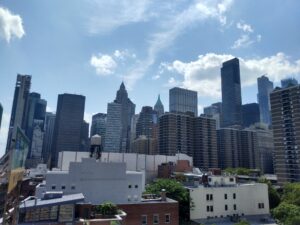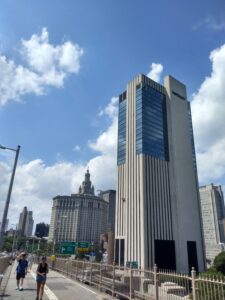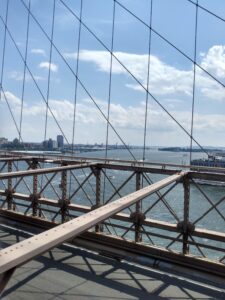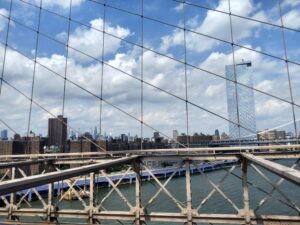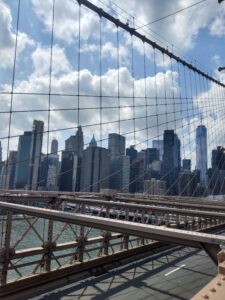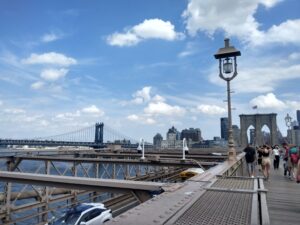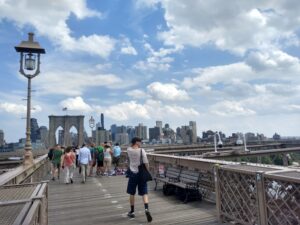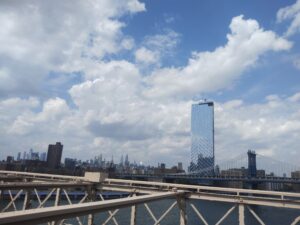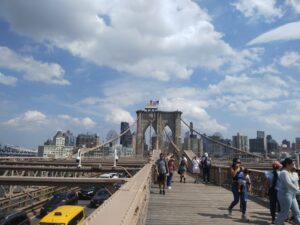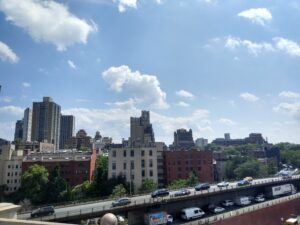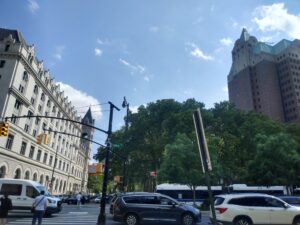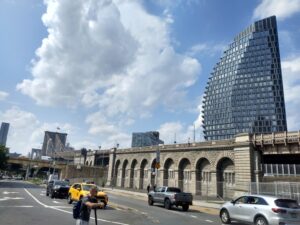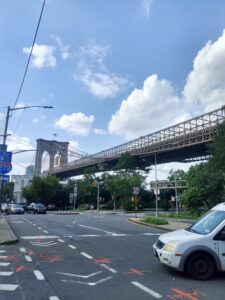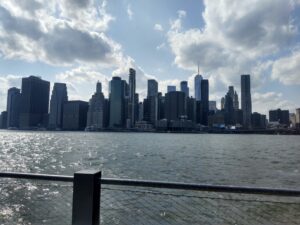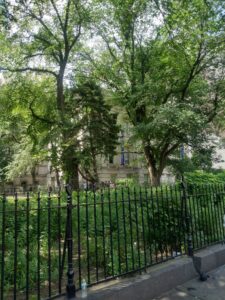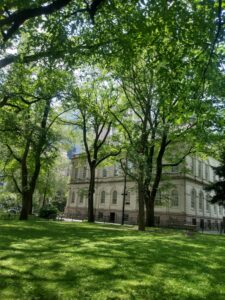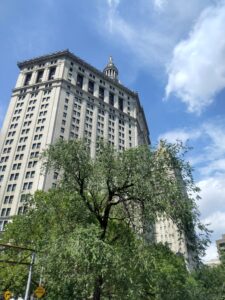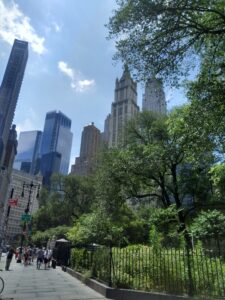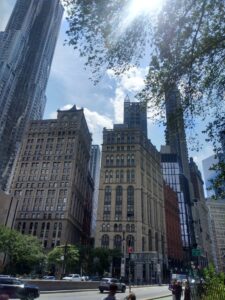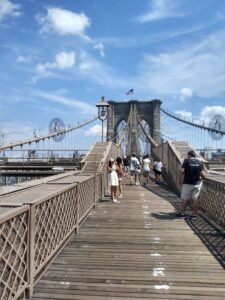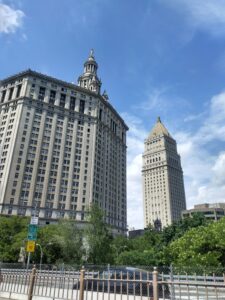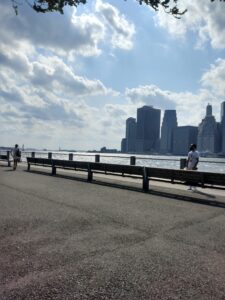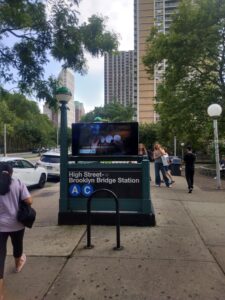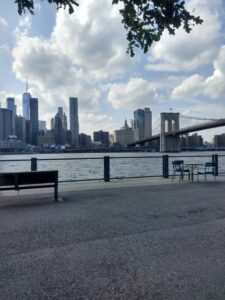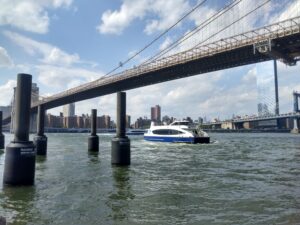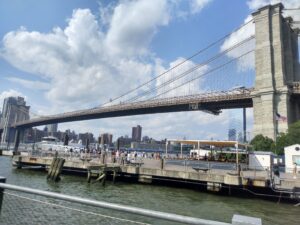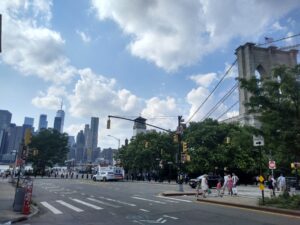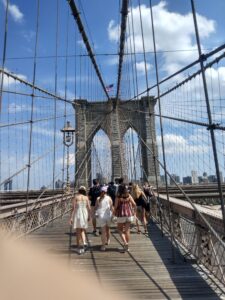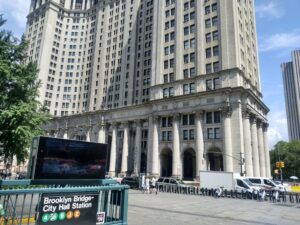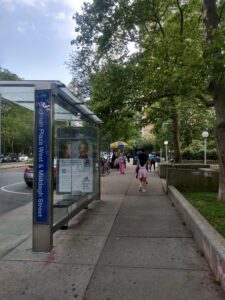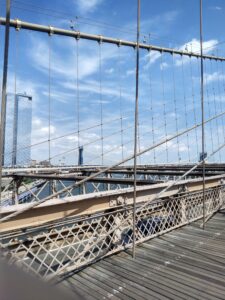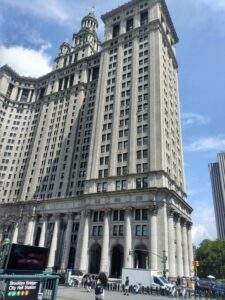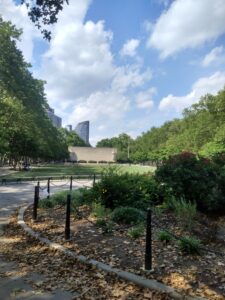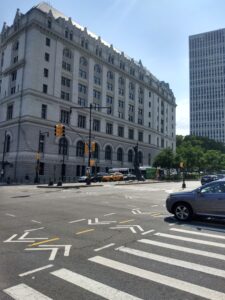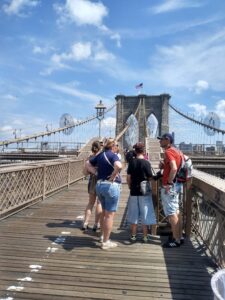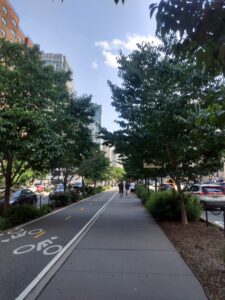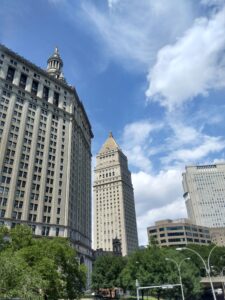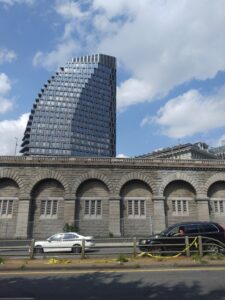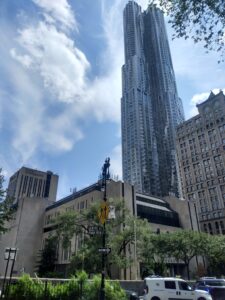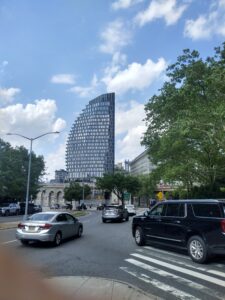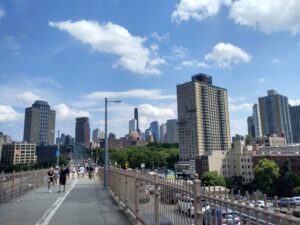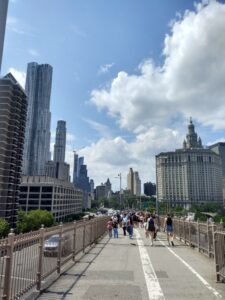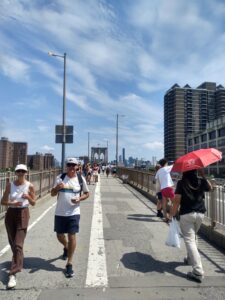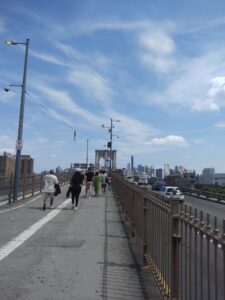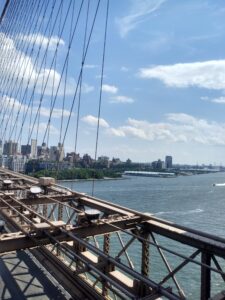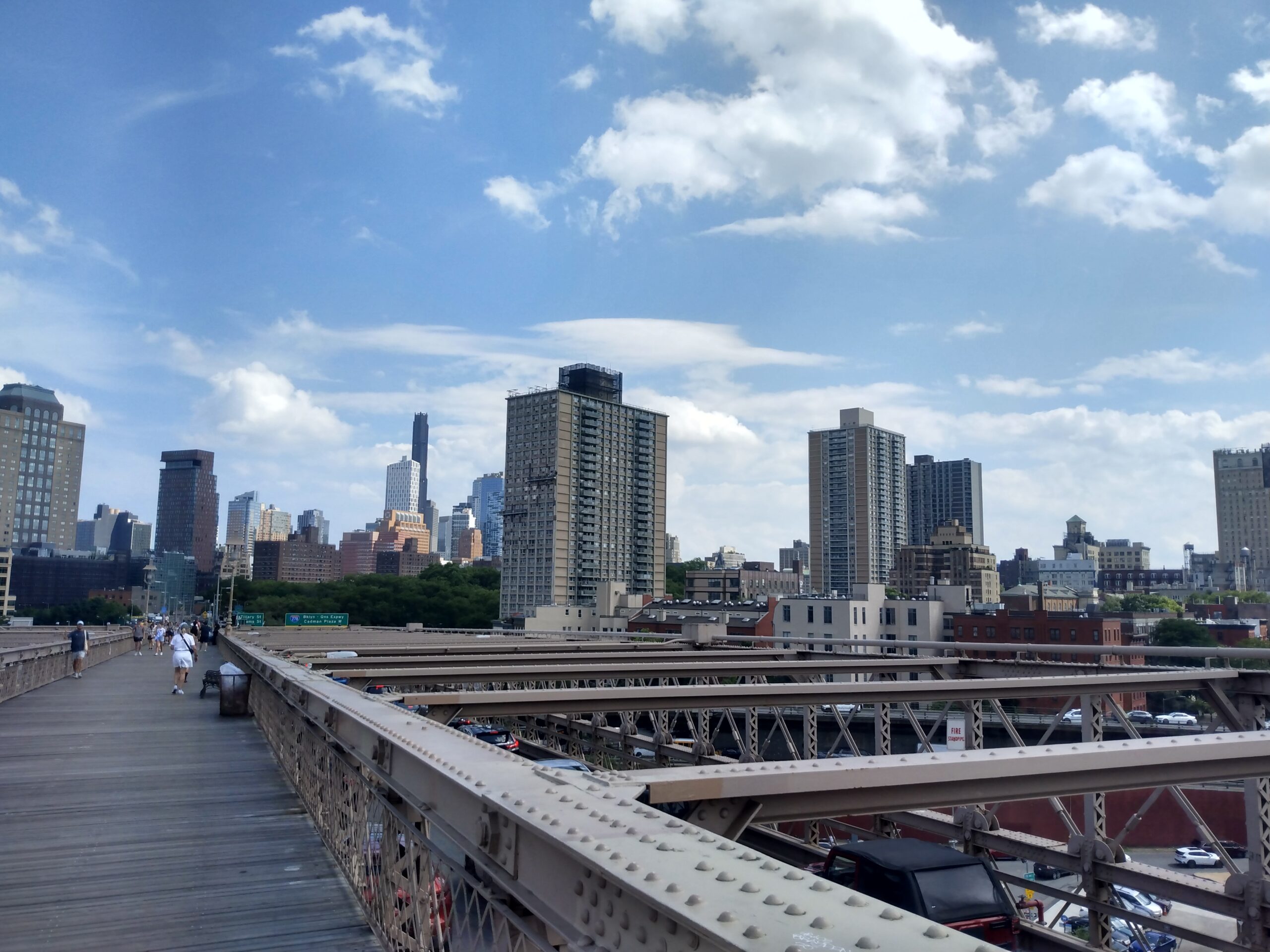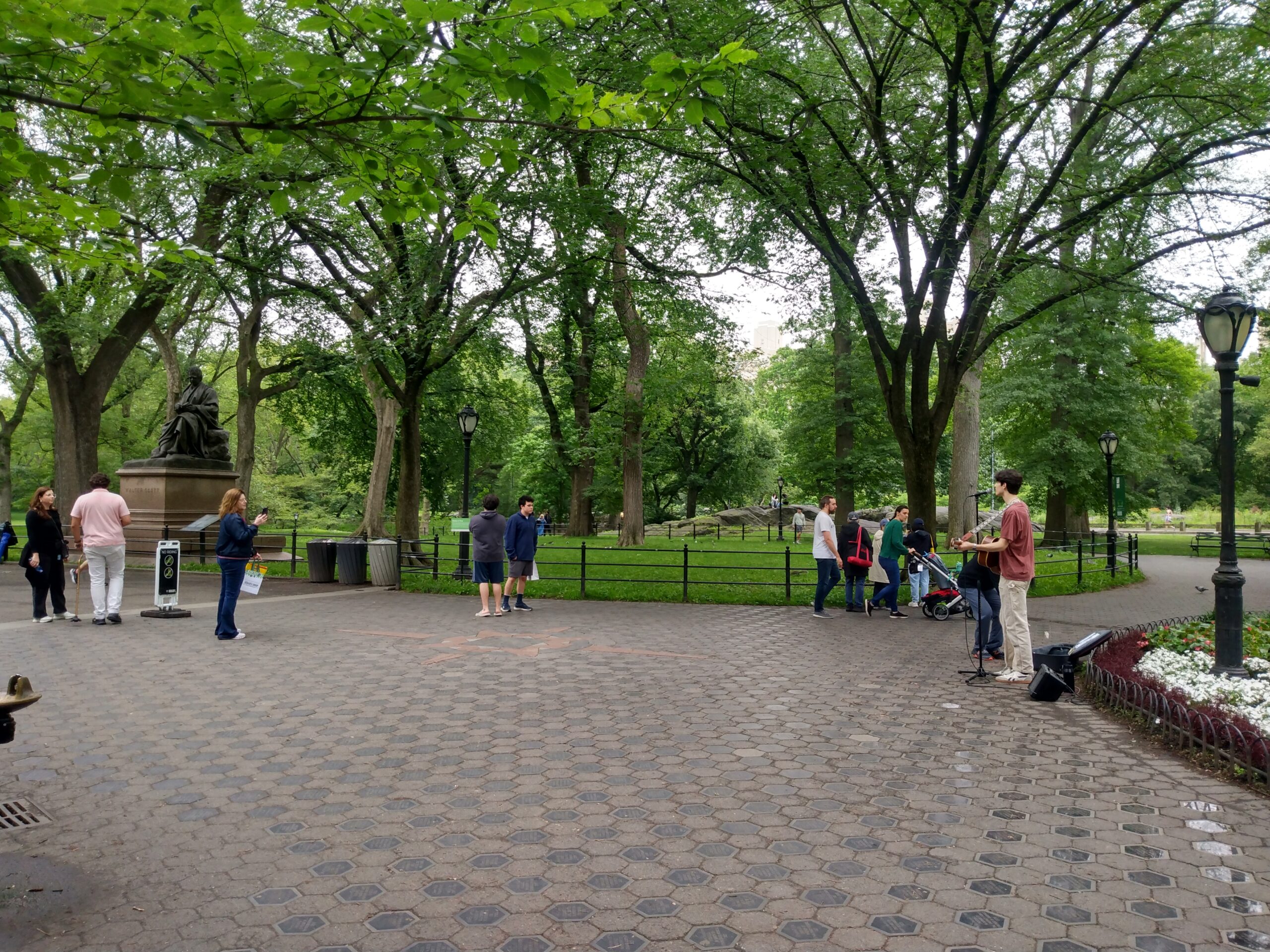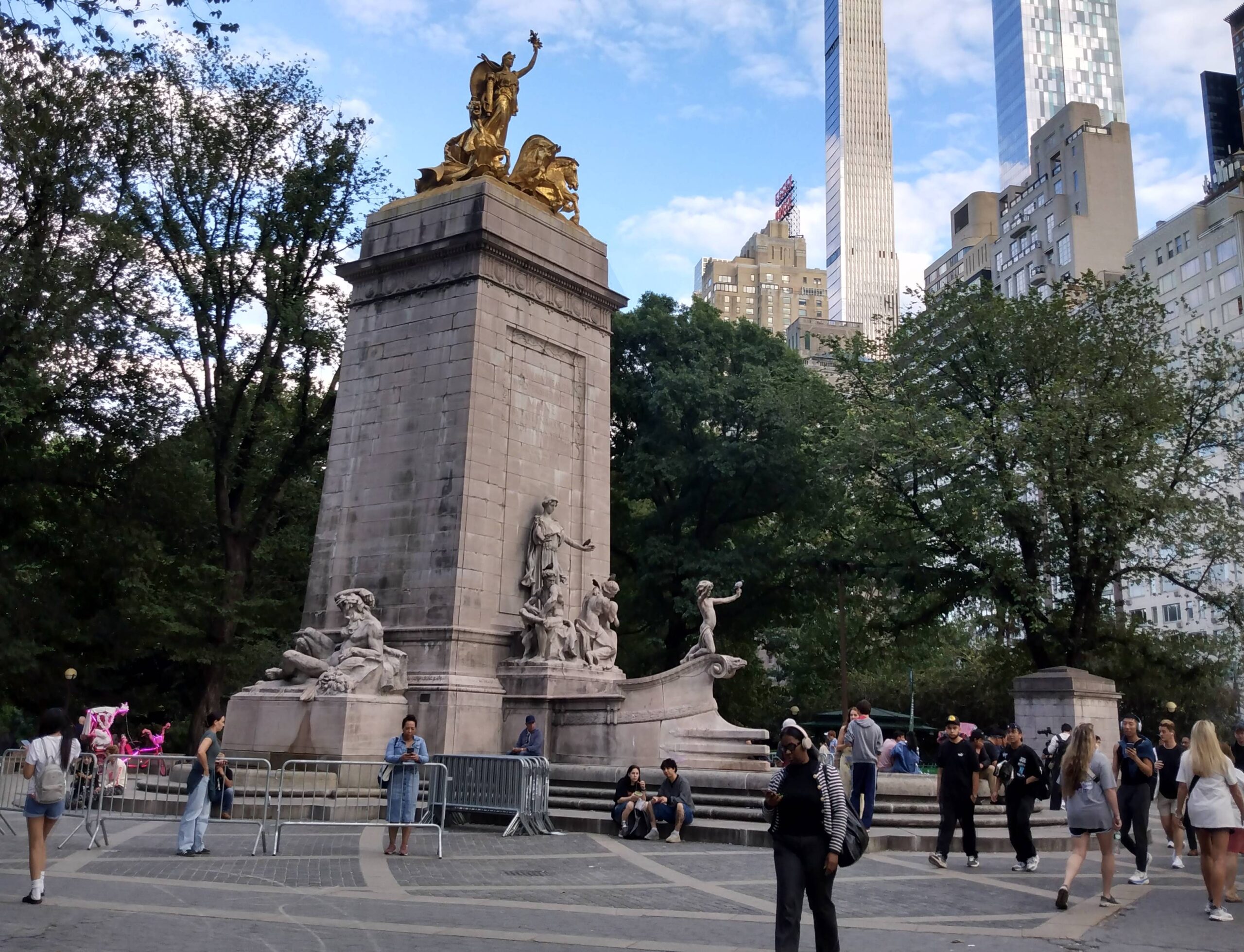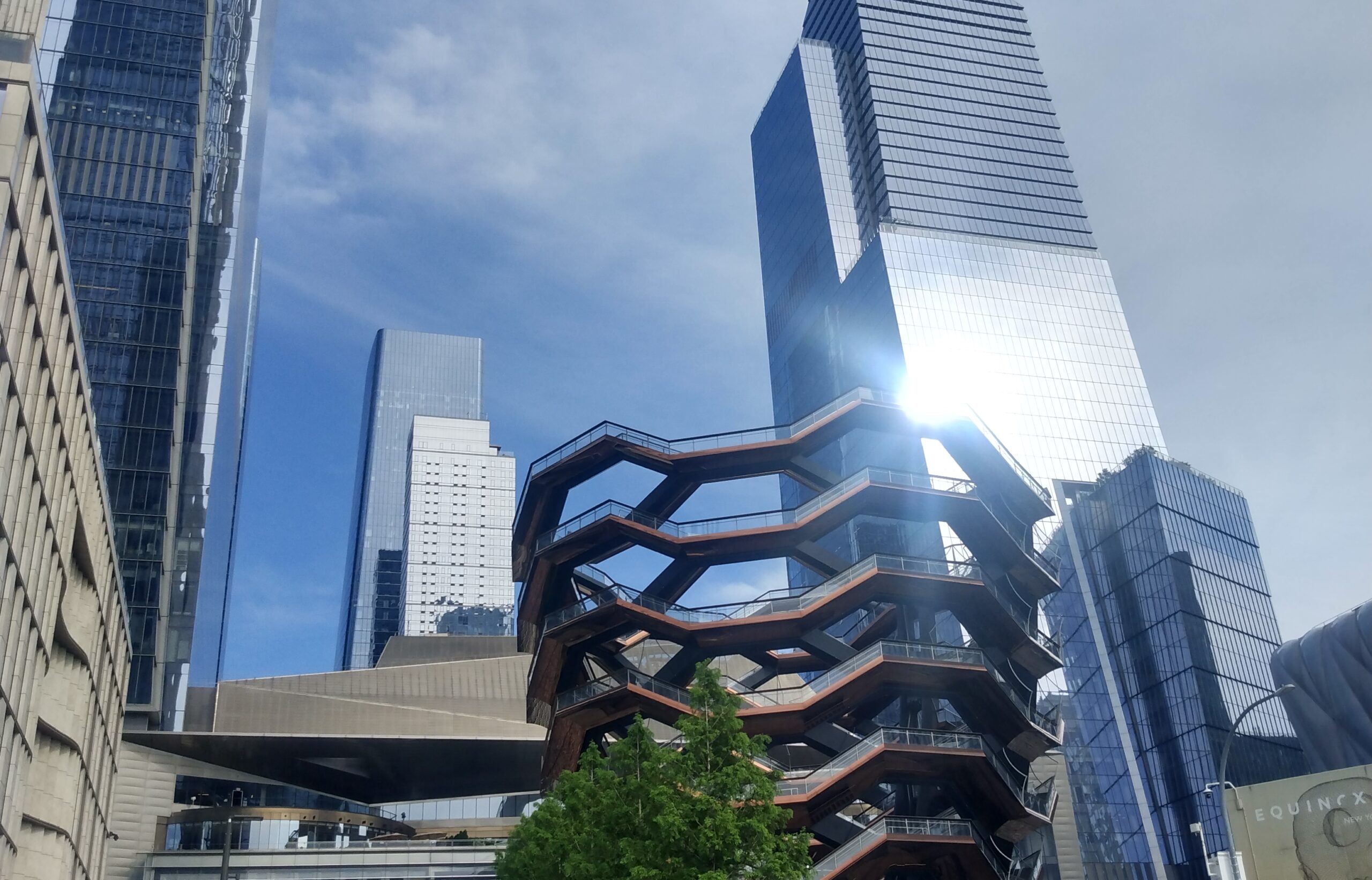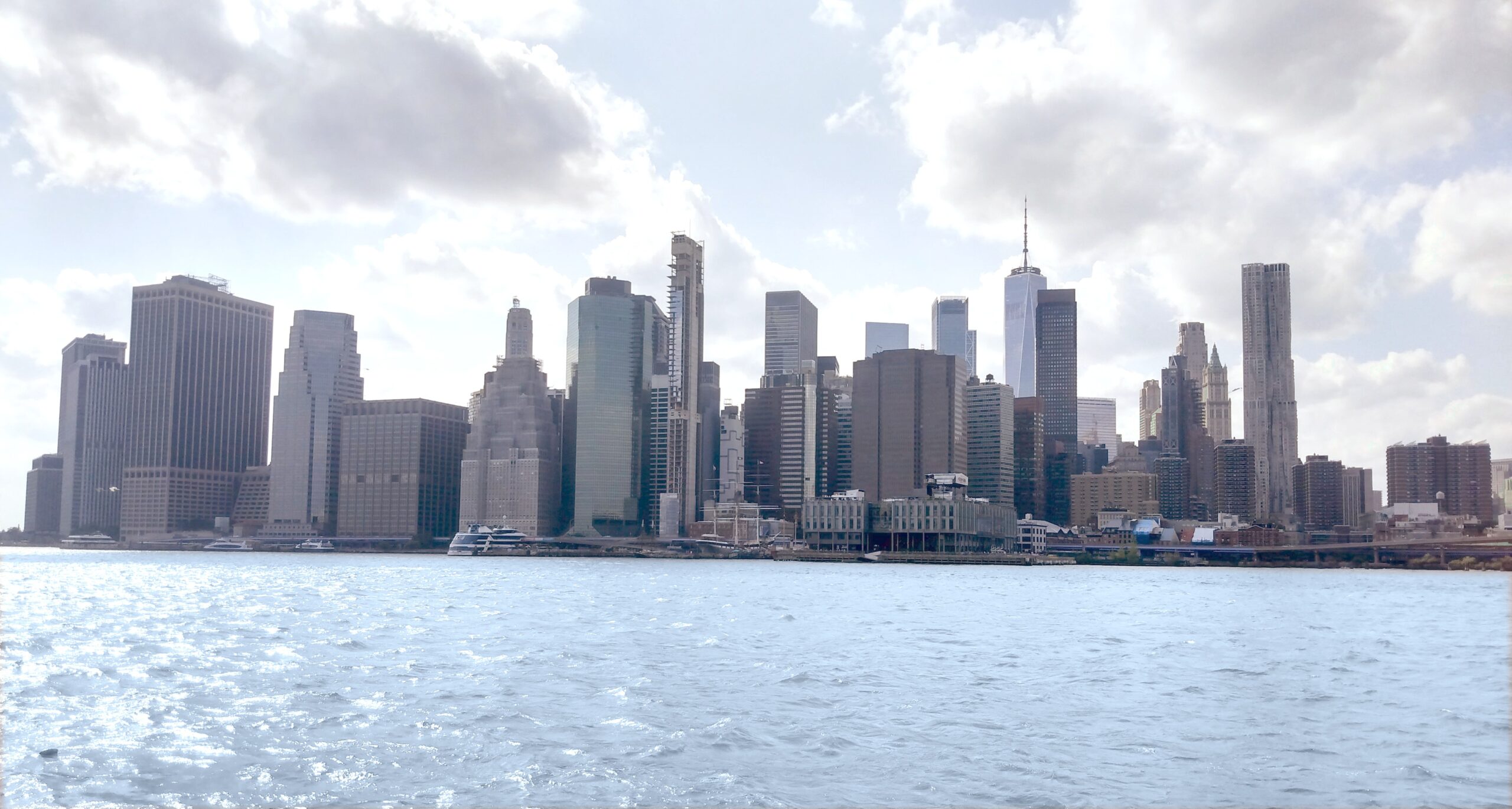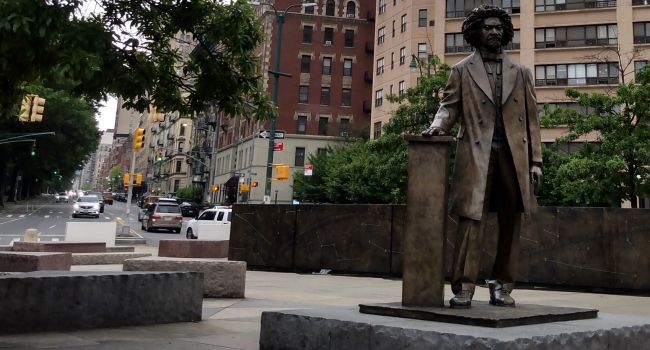The Brooklyn Bridge is one of New York City’s most iconic and historic landmarks. It is a hybrid cable-stayed/suspension bridge that connects the boroughs of Manhattan and Brooklyn, spanning the East River.
History and Engineering
Opening: The bridge was opened to the public on May 24, 1883, after 14 years of construction.Design: Designed by John A. Roebling, it was a marvel of 19th-century engineering. Tragically, Roebling died before construction began, and his son, Washington Roebling, took over as chief engineer. Washington later became bedridden from decompression sickness (“the bends”) while working on the underwater caissons, and his wife, Emily Roebling, took on a significant role in managing the project’s completion.
Milestone: When it was completed, the Brooklyn Bridge was the longest suspension bridge in the world, with a main span of 1,595.5 feet. It was also the first to use steel cables.
Visiting and Crossing the Bridge
The Brooklyn Bridge is a major tourist destination and a popular way for locals to commute between the two boroughs. It is free to cross.
Walkway: The bridge features a wide, elevated promenade that is separated from the vehicle traffic below. This pathway is shared by pedestrians and cyclists.Length: The total length of the bridge and its approaches is about 6,016 feet (over a mile). Walking across the entire bridge typically takes between 30 and 60 minutes, depending on your pace and how often you stop to take photos.
Best Views: For the most famous views of the Manhattan skyline, many people recommend starting your walk from the Brooklyn side and heading toward Manhattan.
Access Points:
Manhattan side: The main pedestrian entrance is near City Hall Park, at the intersection of Centre Street and Park Row.Brooklyn side: The main entrance is at the intersection of Tillary Street and Brooklyn Bridge Boulevard. Another access point is an underpass at Washington Street and Prospect Street, which is closer to the Dumbo neighborhood.



